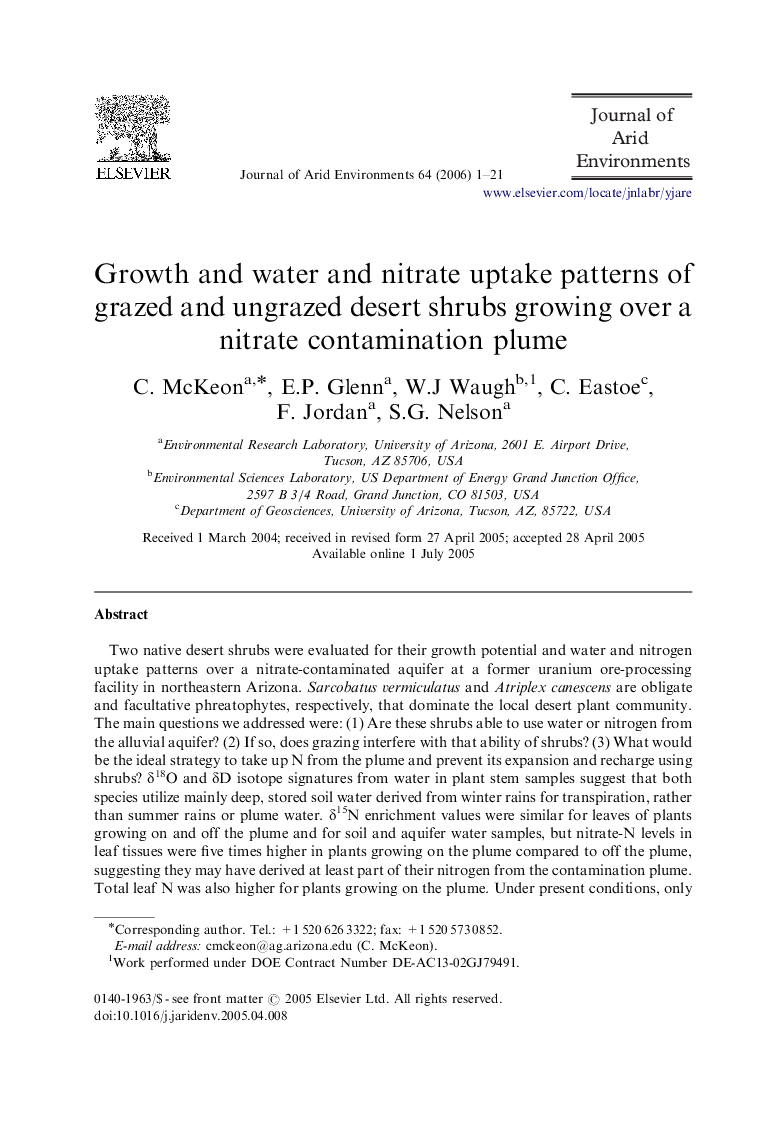| کد مقاله | کد نشریه | سال انتشار | مقاله انگلیسی | نسخه تمام متن |
|---|---|---|---|---|
| 4394887 | 1305566 | 2006 | 21 صفحه PDF | دانلود رایگان |

Two native desert shrubs were evaluated for their growth potential and water and nitrogen uptake patterns over a nitrate-contaminated aquifer at a former uranium ore-processing facility in northeastern Arizona. Sarcobatus vermiculatus and Atriplex canescens are obligate and facultative phreatophytes, respectively, that dominate the local desert plant community. The main questions we addressed were: (1) Are these shrubs able to use water or nitrogen from the alluvial aquifer? (2) If so, does grazing interfere with that ability of shrubs? (3) What would be the ideal strategy to take up N from the plume and prevent its expansion and recharge using shrubs? δ18O and δD isotope signatures from water in plant stem samples suggest that both species utilize mainly deep, stored soil water derived from winter rains for transpiration, rather than summer rains or plume water. δ15N enrichment values were similar for leaves of plants growing on and off the plume and for soil and aquifer water samples, but nitrate-N levels in leaf tissues were five times higher in plants growing on the plume compared to off the plume, suggesting they may have derived at least part of their nitrogen from the contamination plume. Total leaf N was also higher for plants growing on the plume. Under present conditions, only about 5% of the area over the plume is vegetated. Plants protected from grazing inside exclosures increased in volume by 2–4-fold over three growing seasons. Transplants of A. canescens, protected from grazing and irrigated over the first summer, established readily and grew into large shrubs after 3 years. On the basis of this study, the shrub community could be increased to as high as 25% cover and could make a significant contribution to controlling recharge if the contaminated site was protected from grazing. The results suggest that deeply rooted desert shrubs can impact the subsoil water and nitrogen balance, and that this balance can be disrupted by land use practices such as overgrazing that degrade the vegetation cover.
Journal: Journal of Arid Environments - Volume 64, Issue 1, January 2006, Pages 1–21